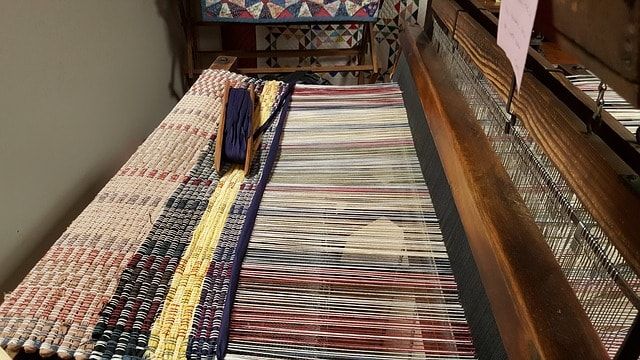3.3.1
Changes to the Prison System
Pentonville Prison
Pentonville Prison
The building of Pentonville Prison was a turning point in the use of prisons as it aimed to reform its inmates rather than just being designed to deter as prisons had been previously.


Design of Pentonville
Design of Pentonville
- Pentonville was designed with a central area and the prison wings were spokes from the centre so that there could be fewer guards required to run the prison.


The separate system
The separate system
- The prison was based on the principle of the separate system, where prisoners spent the majority of their time alone and in their cells, in order to keep them away from the influence of other criminals.
- The separate system was effective in isolating prisoners but it also led to many going mad, nervous breakdowns and even suicide amongst inmates.


Activities in Pentonville
Activities in Pentonville
- Prisoners exercised in the yard wearing masks to avoid them being able to communicate with others.
- Religious instruction was a large part of life in Pentonville and the chapel was constructed with boxes for inmates to sit in whilst in Church to again avoid contact with others.


"Useful work"
"Useful work"
- Cells contained a bed and weaving loom for work.
- Prisoners did ‘useful work’ in order to prepare them for when they were released. This cell design made a separate prison extremely costly to build.
Robert Peel and the Gaols Act, 1823
Robert Peel and the Gaols Act, 1823
The main principle behind Peel's ideas was to reform prisoners and make them less likely to reoffend once they were released.


The Gaols Act
The Gaols Act
- The Gaols Act applied to the 130 biggest prisons in the country and had a number of key principles.


Classifying prisoners
Classifying prisoners
- Prisoners were to be classified according to their crimes, so the most hardened criminals would not be housed with first time offenders.
- Male and female prisoners would also be separated.


Religious instruction
Religious instruction
- Attending church and receiving religious instruction would be a large part of the inmate’s time in prison.


Staff in prisons
Staff in prisons
- Prison warders were to be paid and local magistrates would have to visit regularly to ensure that warders were doing a good job.


Hygiene in prisons
Hygiene in prisons
- The Gaols Act stated that prisoners should have access to fresh water, fresh air and good food.
1Medieval England, 1000-1500
1.1Changing Definition of Crime in Medieval England
1.2Nature of Law Enforcement & Punishment
1.3Case Studies From 1000-1500
2Early Modern England, 1500-1700
2.1Changing Definitions of Crime
2.2Nature of Law Enforcement & Punishment
318th & 19th Century Britain
3.1Changing Definition of Crime in Industrial Britain
3.2Nature of Law Enforcement & Punishment
4Modern Britain, 1900-Present
4.1Changing Definition of Crime in Modern Britain
4.2Nature of Law Enforcement & Punishment
5Whitechapel Local Study
5.1The Geographical Area & Living Conditions
5.2The People of Whitechapel
5.3Policing in Whitechapel
5.3.1The Police Force in Whitechapel
5.3.2Jack the Ripper
5.3.3Challenges Facing the Police
5.3.4End of Topic Test - Policing in Whitechapel
5.3.5Grade 9 - Policing Whitechapel
5.3.6Diagnostic Misconceptions - Professional Police
5.3.7Diagnostic Misconceptions - Jack the Ripper
5.3.8Diagnostic Misconceptions - Vigilance Committee
5.3.9Diagnostic Misconceptions - Rundown Whitechapel
Jump to other topics
1Medieval England, 1000-1500
1.1Changing Definition of Crime in Medieval England
1.2Nature of Law Enforcement & Punishment
1.3Case Studies From 1000-1500
2Early Modern England, 1500-1700
2.1Changing Definitions of Crime
2.2Nature of Law Enforcement & Punishment
318th & 19th Century Britain
3.1Changing Definition of Crime in Industrial Britain
3.2Nature of Law Enforcement & Punishment
4Modern Britain, 1900-Present
4.1Changing Definition of Crime in Modern Britain
4.2Nature of Law Enforcement & Punishment
5Whitechapel Local Study
5.1The Geographical Area & Living Conditions
5.2The People of Whitechapel
5.3Policing in Whitechapel
5.3.1The Police Force in Whitechapel
5.3.2Jack the Ripper
5.3.3Challenges Facing the Police
5.3.4End of Topic Test - Policing in Whitechapel
5.3.5Grade 9 - Policing Whitechapel
5.3.6Diagnostic Misconceptions - Professional Police
5.3.7Diagnostic Misconceptions - Jack the Ripper
5.3.8Diagnostic Misconceptions - Vigilance Committee
5.3.9Diagnostic Misconceptions - Rundown Whitechapel
Unlock your full potential with Seneca Premium
Unlimited access to 10,000+ open-ended exam questions
Mini-mock exams based on your study history
Unlock 800+ premium courses & e-books